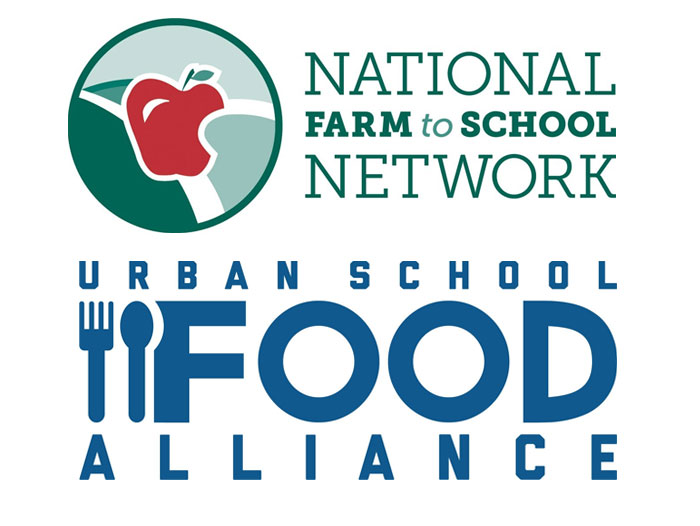Urban School Food Alliance & National Farm to School Network: We Need to Rebuild Our Food System. Schools Can Lead.
July 24, 2020 | 6 min to read

NEW YORK — The COVID-19 pandemic has highlighted the important role schools play in our food systems, as a source of food for students, an employer of essential food service workers and a market for food producers. The pandemic also exposed the deep, pervasive inequities in our food system, including the devastating impacts COVID-19 had on those historically underserved.
Our food system is permeated with troubling disparities. Even before the pandemic, access to healthy food has been a challenge most pronounced for people of color who live in low-income communities. And since the onset of the pandemic, a survey has found that nearly 41 percent of mothers with children ages 12 and under reported household food insecurity.
Food system workers, who represent 1 in 5 essential workers, are predominantly people of color who often earn less than a living wage, and have been dying at higher rates from COVID-19 due to prevalence of underlying health conditions. Concerns exist that farmers of color, who make up less than 4 percent of the nation’s producers, are being overlooked in the US Department of Agriculture’s Coronavirus Food Assistance Program. Combined, these inequities in our food system span urban, suburban and rural communities, the direct result of inequitable and inefficient policies and practices as old as our nation itself.
When, in March, nearly all 100,000 schools across the country closed their doors, there were herculean efforts to ensure that school children – nearly 75 percent of whom receive free or reduced price meals – continued to have access to food. Ensuring every child is fed must be part of our work to rebuild the food system. As conversations turn towards “what’s next” in responding to the pandemic, we have a tremendous opportunity to change our food system and ensure that every person along the supply chain – from grower to eater, is treated justly. To recover from the present health and economic crisis, we must relook at the critical role food plays in health, equity and prosperity in our communities.
Many approaches will be needed to do this work, and we’ve been heartened to see multiple ideas already shared. There is one approach we think deserves more attention: school cafeterias can be a major propeller of this urgent, needed change in how we eat. Here’s how:
School cafeterias are our nation’s largest restaurant chain. When school is in session, cafeterias feed 30 million hungry mouths each day. More than 7 billion meals are served annually through the National School Lunch Program and National School Breakfast Program and more than $18.2 billion invested in these programs annually. With schools everywhere, focusing on school food supply chains means focusing on food in every community.
School meal funding recirculates in local communities. The collective purchasing power of school food service provides an opportunity to invest in local communities – both in the food purchased for meals, and in providing stable workforce opportunities. According to the 2015 USDA Farm to School Census, schools spent nearly $800 million annually on local food purchases, and more than 42 percent of schools report engaging in farm to school opportunities. Every dollar invested in farm to school efforts stimulates an additional $0.60-$2.16 of local economic activity.
School meal infrastructure helps make communities adaptable during a crisis. During this pandemic, many schools have taken on the role of feeding entire communities. The existing infrastructure of school meals and the experience and ingenuity of school nutrition professionals has allowed them to meet this critical need. Furthermore, schools’ existing relationships with farmers have shown resilience during this crisis: a School Nutrition Association survey found that nearly a quarter of schools are supporting local agriculture and serving local foods in their emergency feeding programs. Simultaneously, we’re seeing support of local food systems continue to rise during this pandemic.
School meals are an investment in the future. This pandemic shows we are capable of cooperation and rapid change, and it is important this continues. Every community deserves a strong and just local food system and we must continue to leverage our collective energy for equitable change as we rebuild by seeking opportunities for collaboration and action amongst schools, growers, producers, governmental agencies and community advocates. Investing in school meals is smart and a proven strategy for whole-community health, economic stimulus and resilience. School meals must be part of the conversion as we talk about the future.
For more information, visit www.farmtoschool.org or www.urbanschoolfoodalliance.org or contact Anna Mullen at anna@farmtoschool.org or press@urbanschoolfoodalliance.org.
